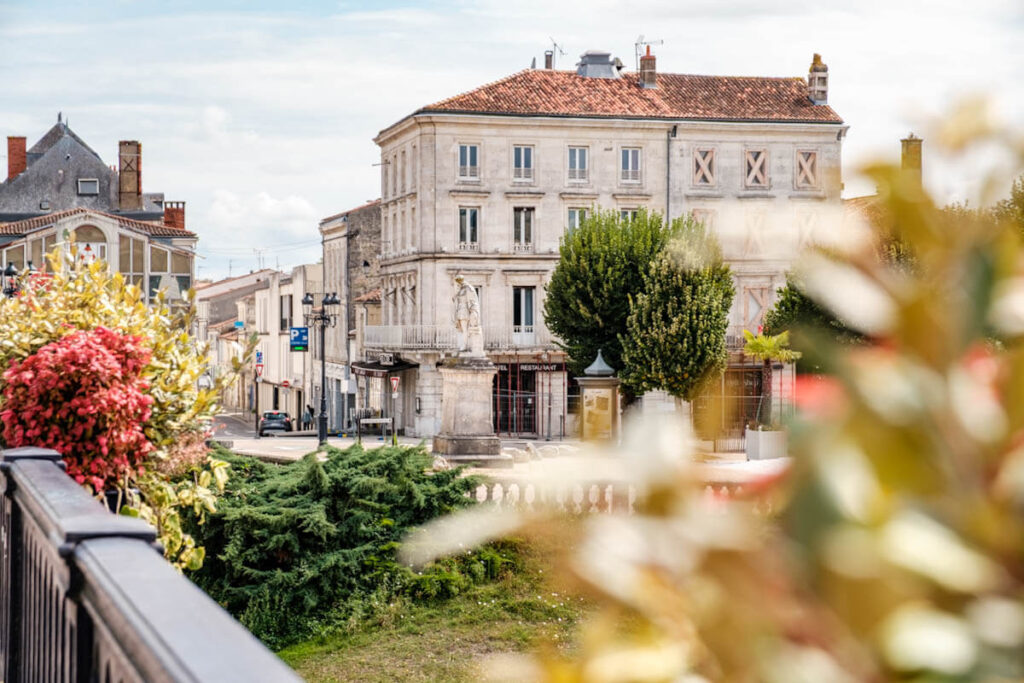Are you on vacation in the French region of Nouvelle-Aquitaine? Then it’s definitely worth visiting the city of Saintes, especially if you’re interested in Roman remains. Saintes is located along the Charente River and the old Roman route between Bordeaux and Poitiers.
Back in the history of Saintes
The history of Saintes dates back to pre-Roman times. The city was originally inhabited by the Santonen, a Gallic tribe from which the city’s name is derived. After the Romans conquered Gaul in the 1st century BC, Saintes (then Mediolanum Santonum) became an important regional center.
Under Roman rule, the city grew to become the first capital of Aquitanië and was strategically located along the Via Agrippa, a major Roman road. During this time, significant public buildings were constructed, including an amphitheater and a triumphal arch. The city’s importance diminished for the Romans when Bordeaux became the administrative center of the region. In the medieval period, Saintes played a significant role in religion and trade. However, the Roman remains are still considered one of the most important aspects of the history of Saintes.
Follow the green line in Saintes
In several French cities, you’ll find a green line painted on the street; Saintes is no exception. By following this green line, you’ll pass by various landmarks and beautiful spots. You can easily pick up the route at the triumphal arch, where the tourist office is located. Here, you can grab a map outlining the green line route.
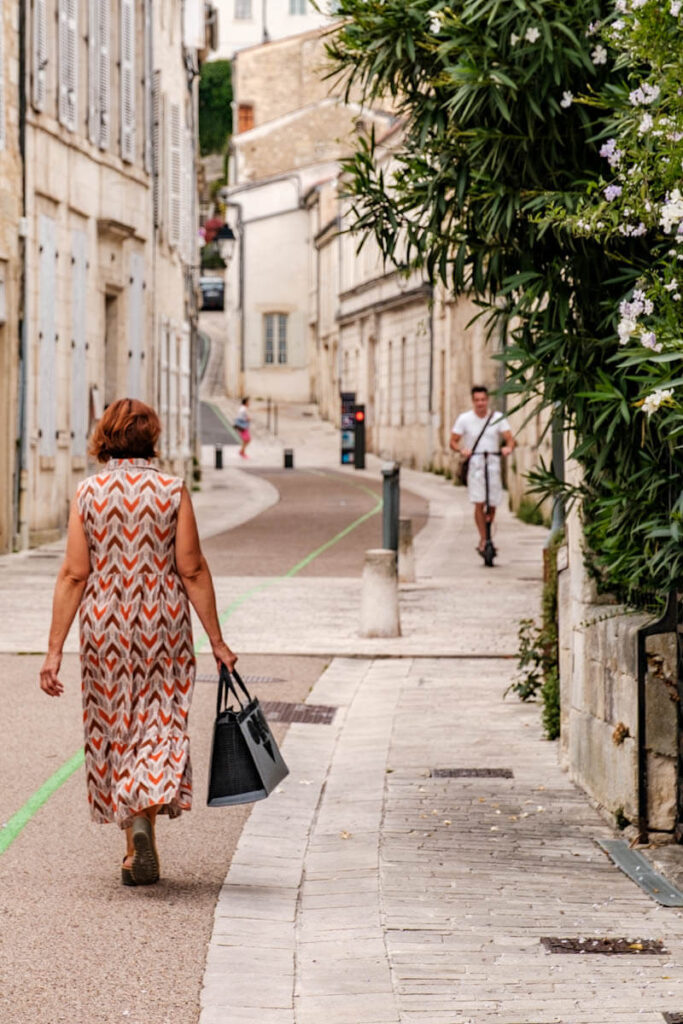
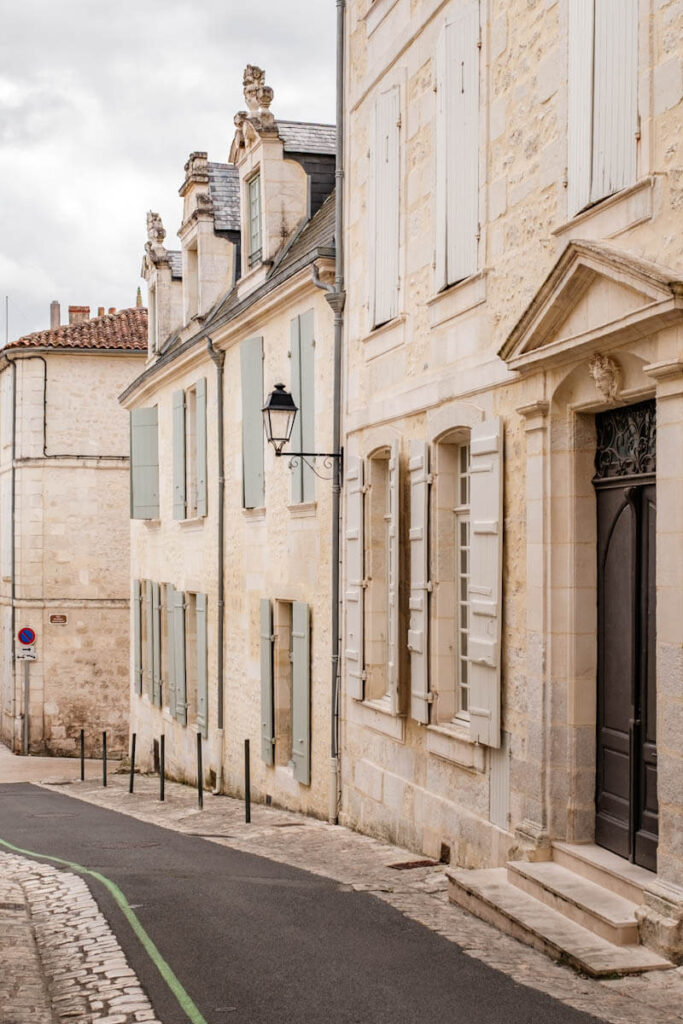
Attractions in Saintes at a glance
The green line takes you past Roman remains and medieval buildings, beautiful squares and picturesque streets. On the map, you’ll find brief information about the lovely spots in Saintes you’ll encounter. It’s a great way to explore the city at your own pace! Although many attractions are on the route, it doesn’t cover everything. Below is an overview of the most important sights and tips in Saintes.
Arènes Gallo-Romaines
The impressive Roman amphitheater (Arènes Gallo-Romaines) in Saintes dates back to the 1st century AD and was once one of the largest in Gaul. The theater was built in a natural bowl (a kind of small valley), which made the construction of the stands easier and improved the acoustics. The theater could hold around 15,000 spectators.
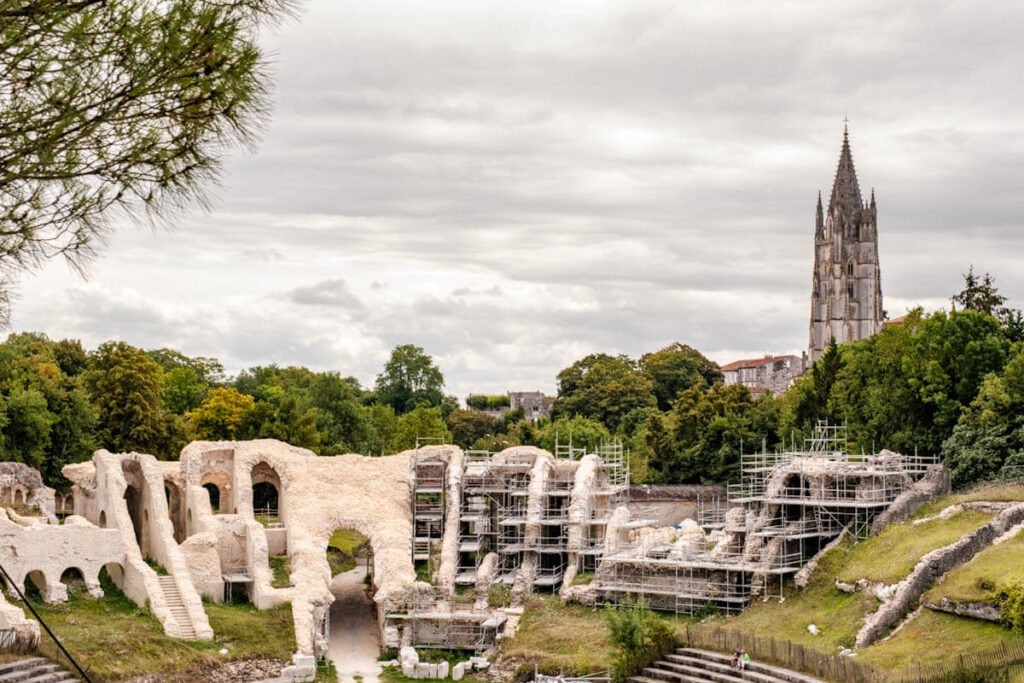
Arc de Germanicus
The Germanicus Arch (Arc de Germanicus) is a triumphal arch from the 1st century AD, built in honor of Emperor Tiberius and his family. This arch once marked the entrance to a Roman bridge over the Charente River. When the bridge was demolished, the triumphal arch was moved to the side to ensure its preservation. The inscriptions and reliefs serve as a reminder of Saintes’ important role during Roman times.
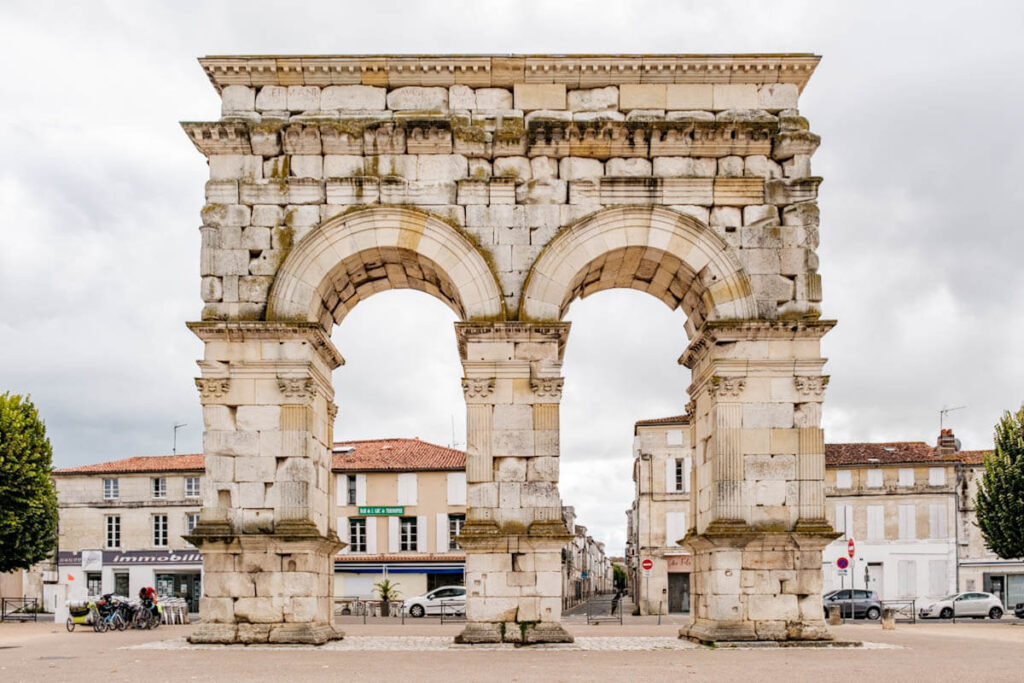
Thermes de Saint-Saloine
The Saint-Saloine Baths (Thermes de Saint-Saloine) in Saintes, built at the end of the 1st century AD, were an important social center during Roman times, where hygiene, relaxation and social interaction came together. The bathhouse covered 8,000 m² and featured various rooms, including a caldarium (hot room), a tepidarium (warm room) and a frigidarium (cold room). Surrounding the baths were a library, shops and rest areas. Only the southeastern part of the baths has been preserved.
Aqueducs gallo-romains de Saintes
The Gallo-Roman aqueducts of Saintes (Aqueducs gallo-romains de Saintes) are a testament to advanced construction techniques. The oldest aqueduct in Saintes, dating from around 20 AD, transported water from the Font-Morillon spring through underground channels and the impressive Pont des Arcs, a 160-meter-long bridge with 27 arches. Midway through the 1st century, a second aqueduct was built, bringing water from the springs at Vénérand and Le Douhet, with a capacity of 12,000 m³ per day. In 2010, a third 4th-century aqueduct was discovered, indicating the continued expansion of the water system during Roman times.
Historic center of Saintes
Strolling through the old town center of Saintes is a real pleasure! Narrow streets, charming timber-framed houses and cozy squares; Saintes has it all. The town hosts a market several days a week at various locations. It’s highly recommended to visit the city on one of these days, especially if you’re a foodie!
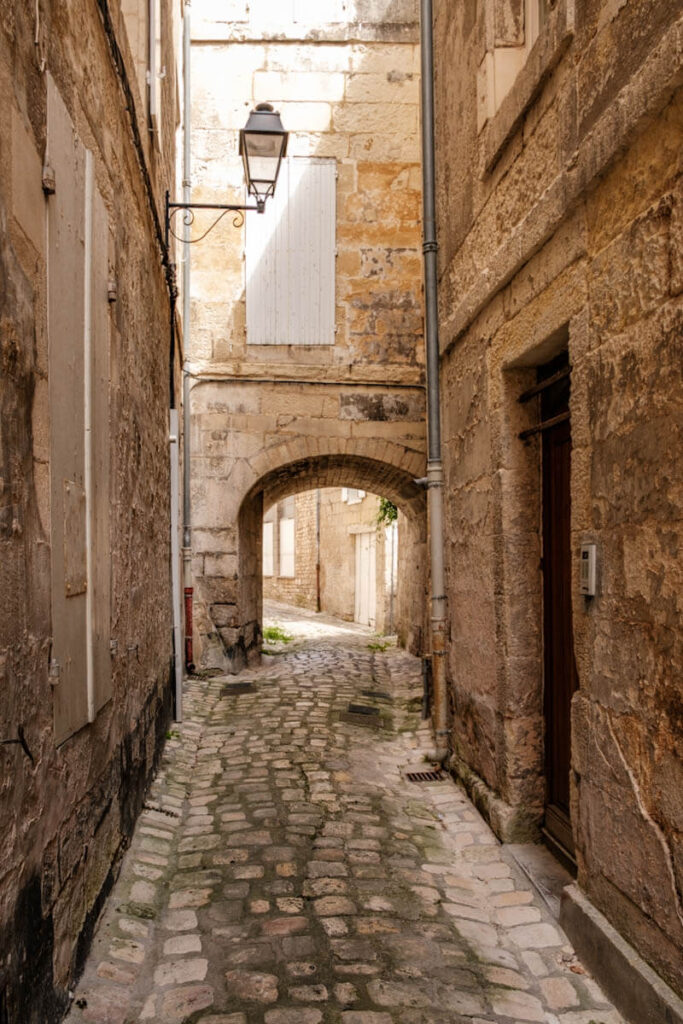
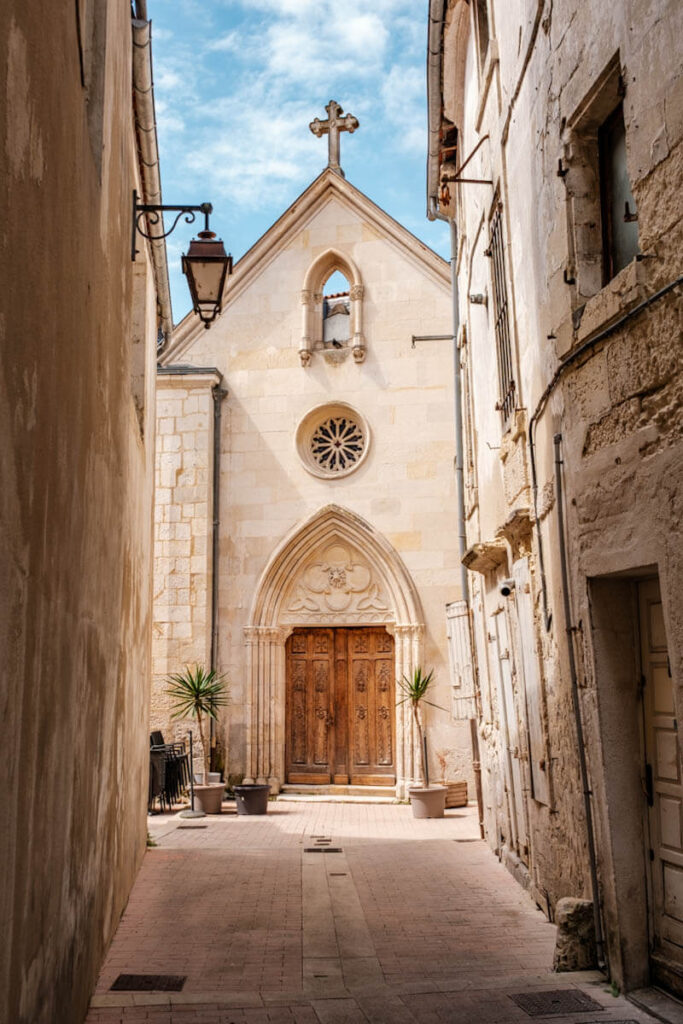
Abbaye aux Dames
The Abbaye aux Dames was founded in the 11th century and was one of the first Benedictine abbeys for women in France. The abbey church features a beautiful Romanesque facade and impressive interior. Today, this abbey serves as the cultural center of Saintes and is the venue for the annual Saintes Festival.
Cathédrale Saint-Pierre de Saintes
The imposing Cathédrale Saint-Pierre de Saintes dominates the skyline of Saintes with its distinctive Gothic bell tower. The cathedral was built in the 15th century on the site of an older church and has a richly decorated interior with beautiful stained-glass windows. During the religious wars, the cathedral was severely damaged, but later restorations have largely restored its original grandeur.
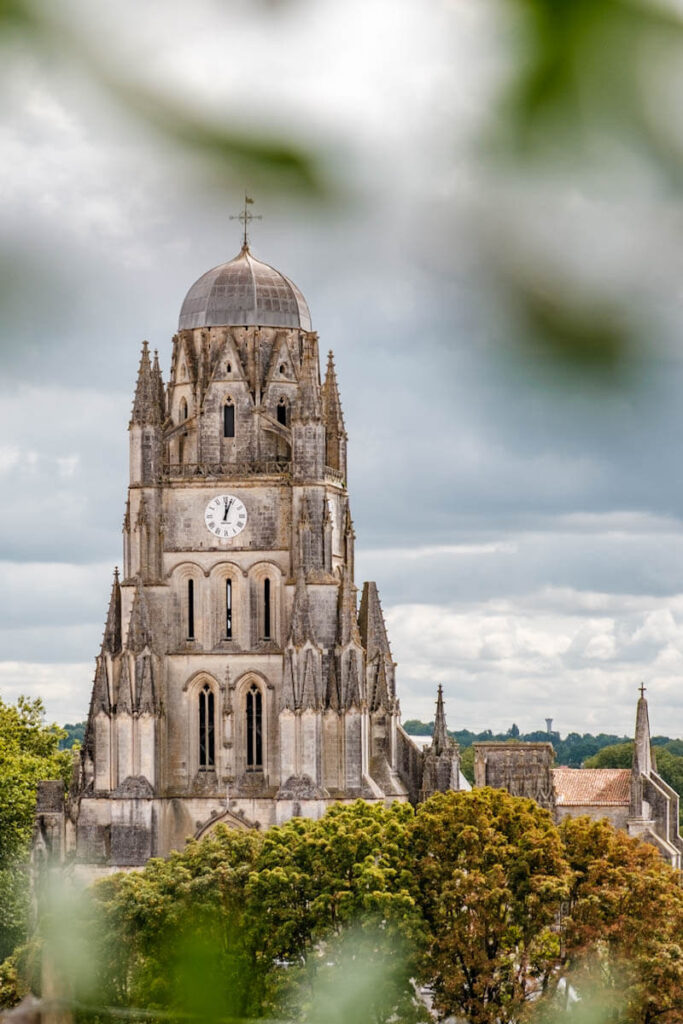
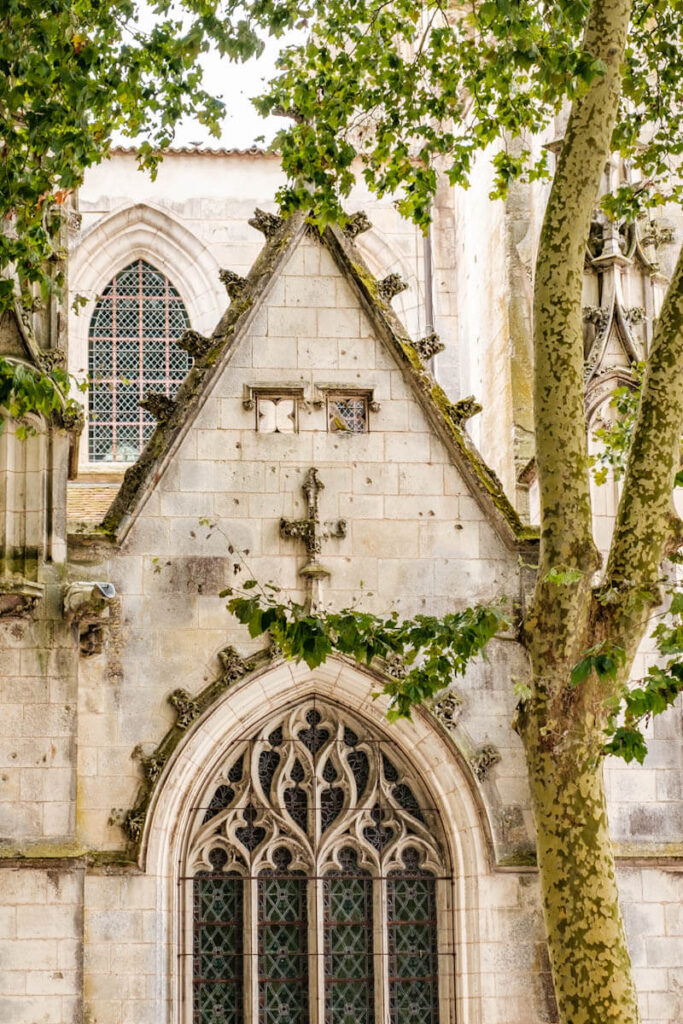
Basilique Saint-Eutrope de Saintes
The Église Saint-Eutrope (Basilique Saint-Eutrope de Saintes), dedicated to the first bishop of Saintes, is an important pilgrimage site on the route to Santiago de Compostela. The basilica was built in the 11th century. The crypts are among the largest in Europe, measuring 35 meters long with 53 beautifully decorated capitals. Both the basilica and the crypts were added to the UNESCO World Heritage List in 1998.
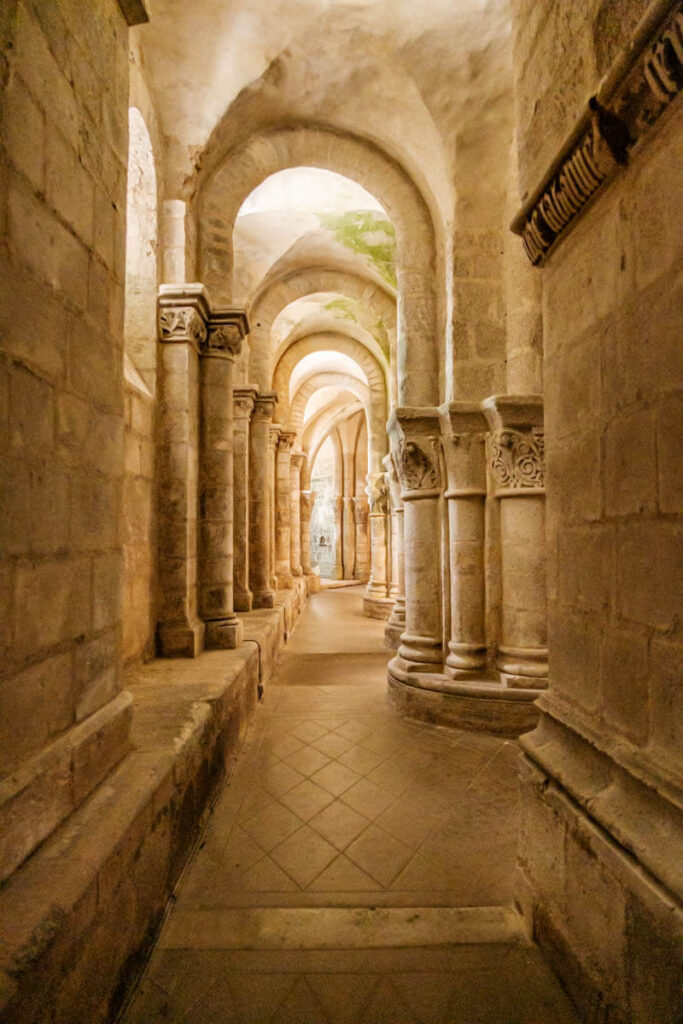
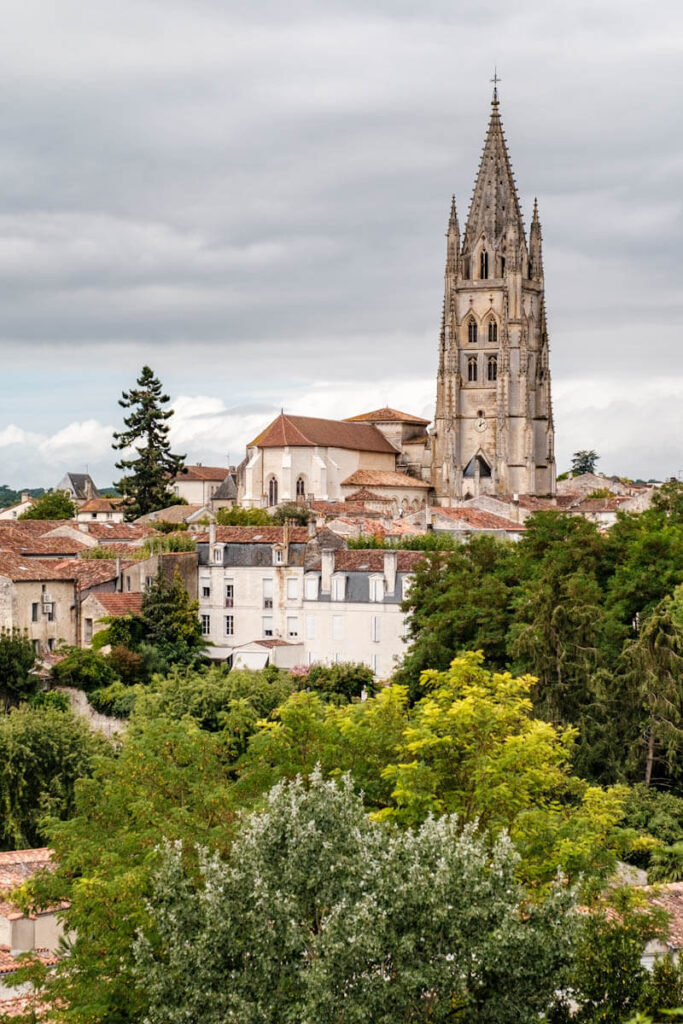
Chapelle Saint-Louis de Saintes
The Saint-Louis Chapel (Chapelle Saint-Louis de Saintes) was built in the 17th century and offers a beautiful view of the city and its surroundings, thanks to its location on top of a hill.
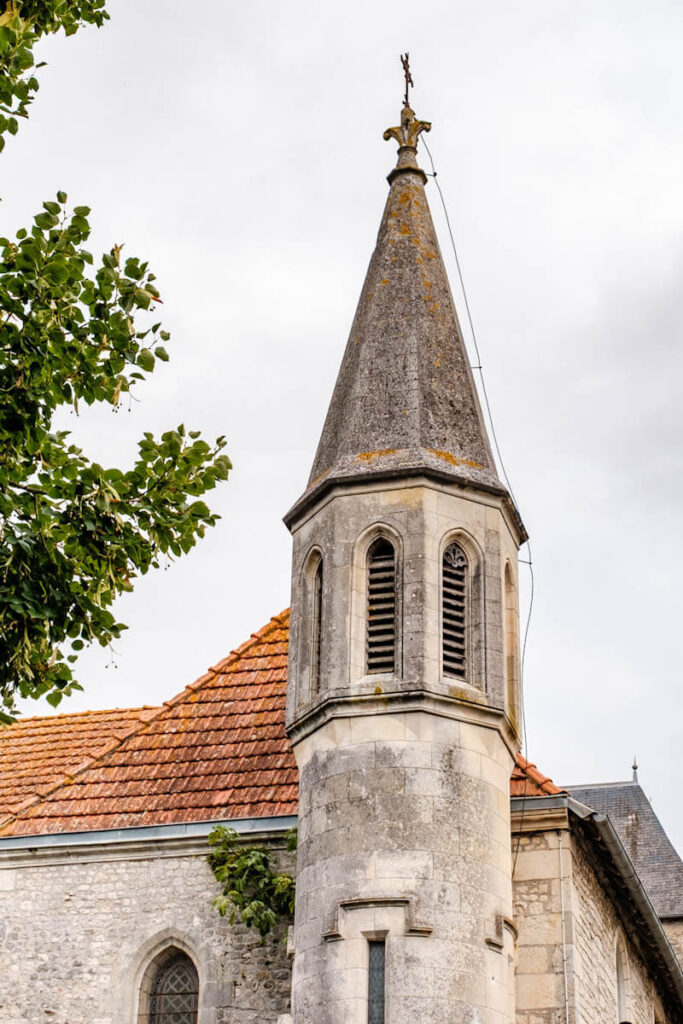

Musée Archéologique de Saintes
For lovers of antiquity, the Musée Archéologique de Saintes offers a great insight into the Roman past of Saintes. Here, you can view mosaics, sculptures, pottery and other archaeological finds that showcase the city’s Roman grandeur.
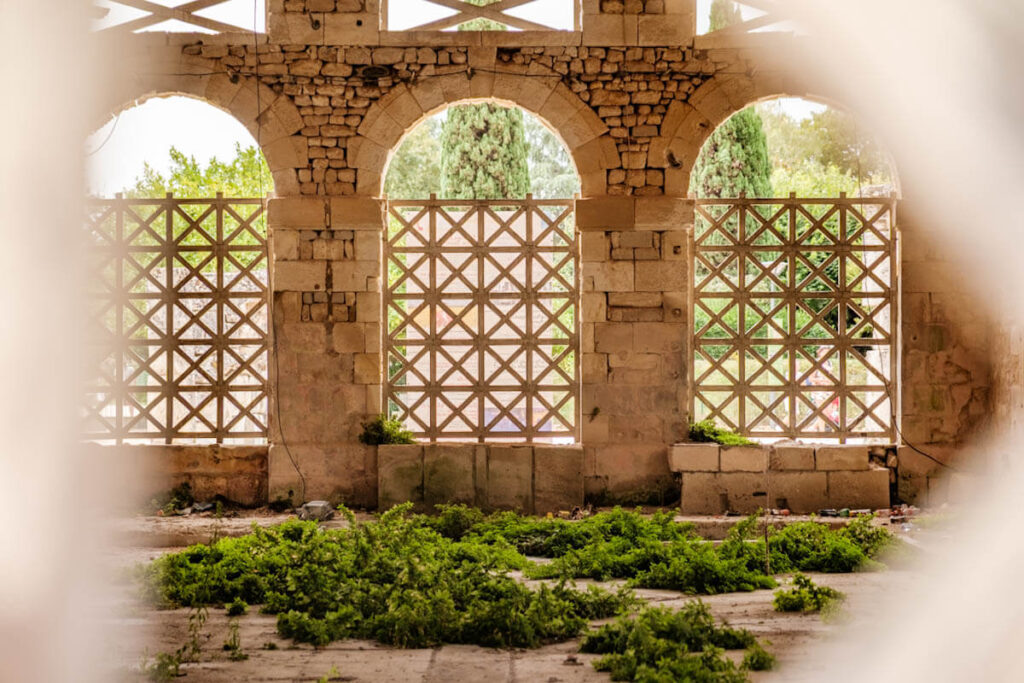
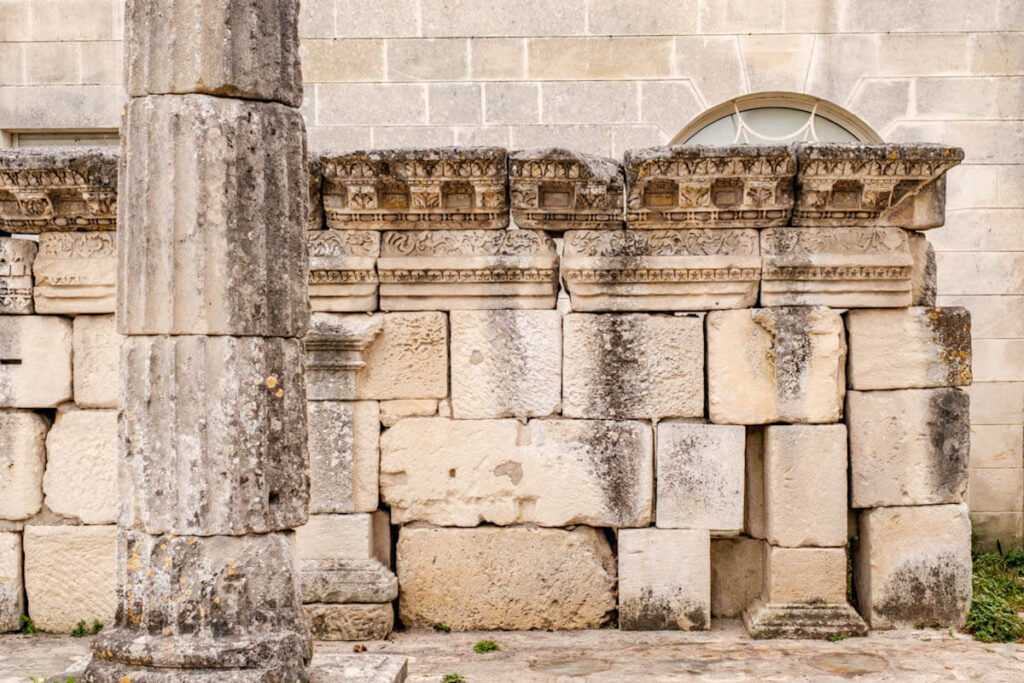
Musée Dupuy-Mestreau
The charming Musée Dupuy-Mestreau is housed in an 18th-century mansion and displays a diverse collection of art and historical objects, ranging from traditional regional costumes and furniture to religious art and ancient weapons.
Rivière de Charente
The Charente River is the lifeblood of Saintes. The quays along the river invite you for a stroll with continuous views of the edge of the old town and passing boats. You can also take a boat trip to explore the city from the water.
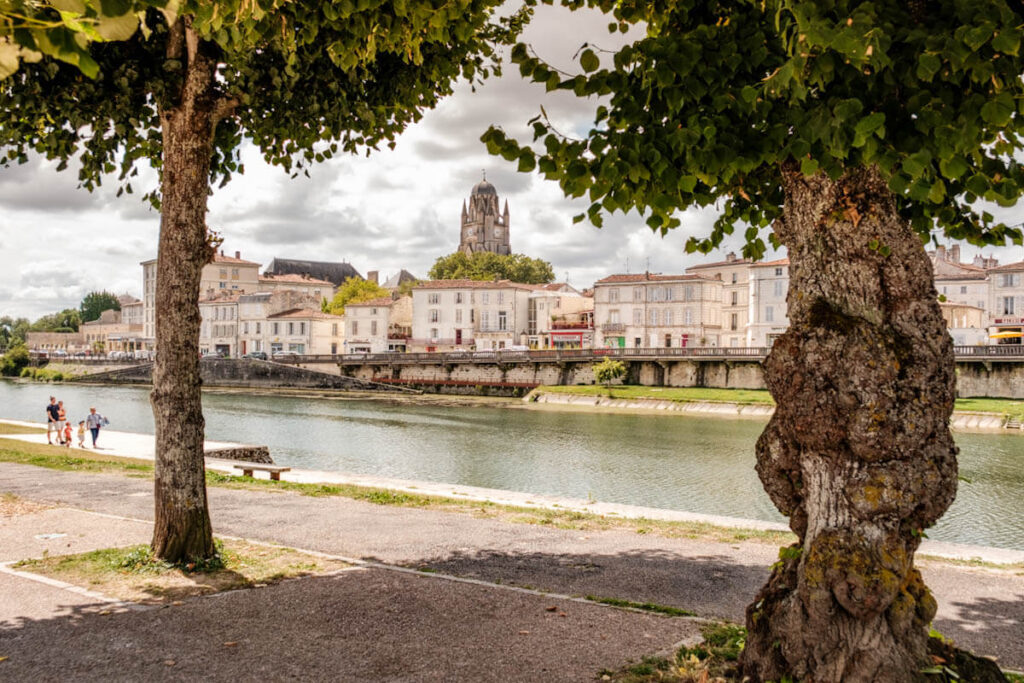
How to get to Saintes
From Utrecht, it takes about 11 to 12 hours by car to reach Saintes in Nouvelle-Aquitaine. I visited Saintes during a vacation in this part of France, where I also explored the islands of Île de Ré and Île d’Oléron. I also spent two days at the fantastic Puy du Fou park, which is highly recommended! On the way, we spent a few days in Orne (Basse-Normandie), visiting places like Mortagne-au-Perche, La Perrière and Bellême. So much beauty to see in France!
If you don’t have much time to drive to this part of France but still want to visit for a few days, you can fly into Bordeaux and rent a car there; within 1.5 hours, you’ll be in Saintes. It’s a great destination for a few nights and there’s plenty to see nearby, such as the beautiful coast of Nouvelle-Aquitaine, the islands mentioned above and cities like Cognac, La Rochelle and Limoges.
